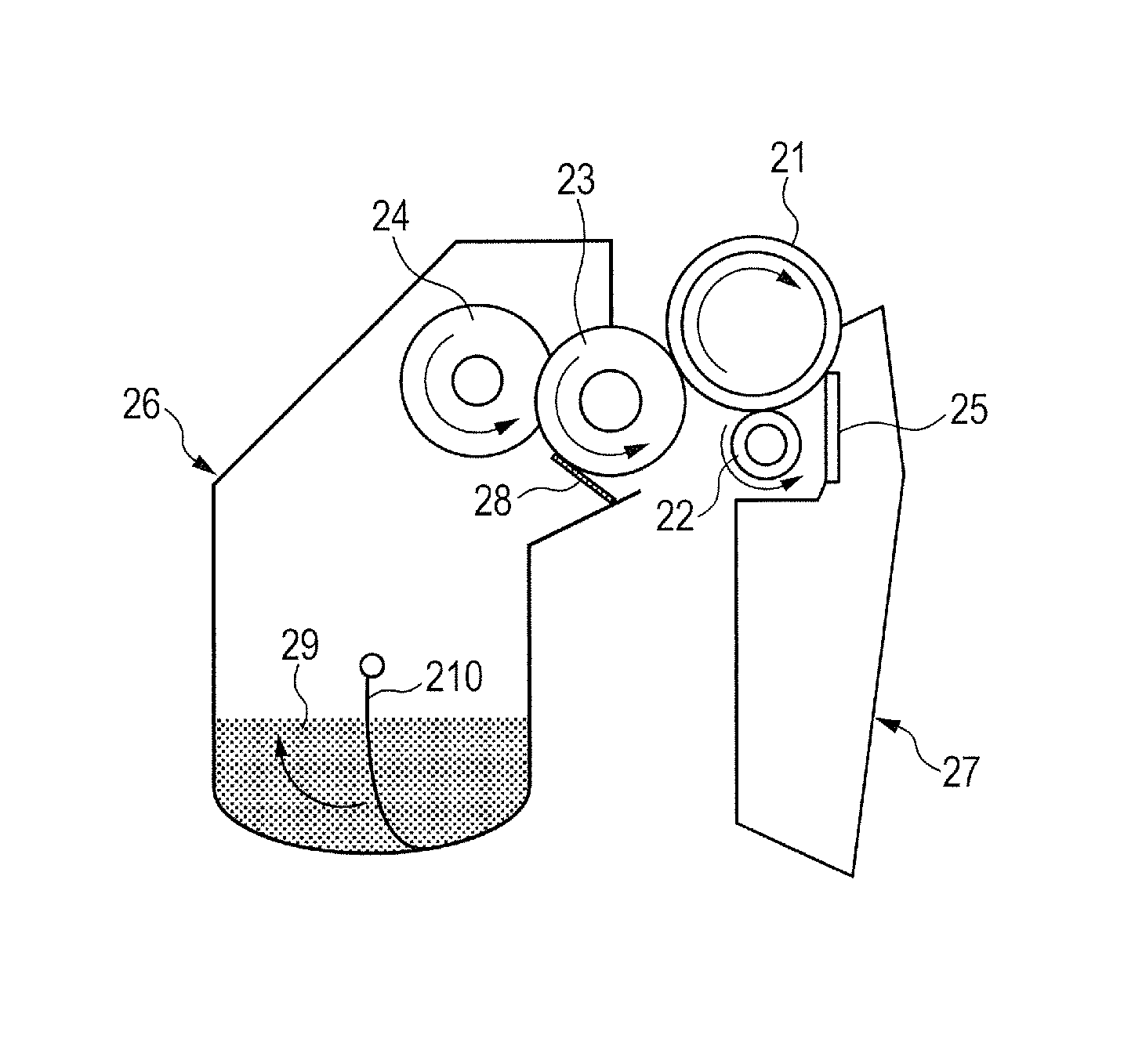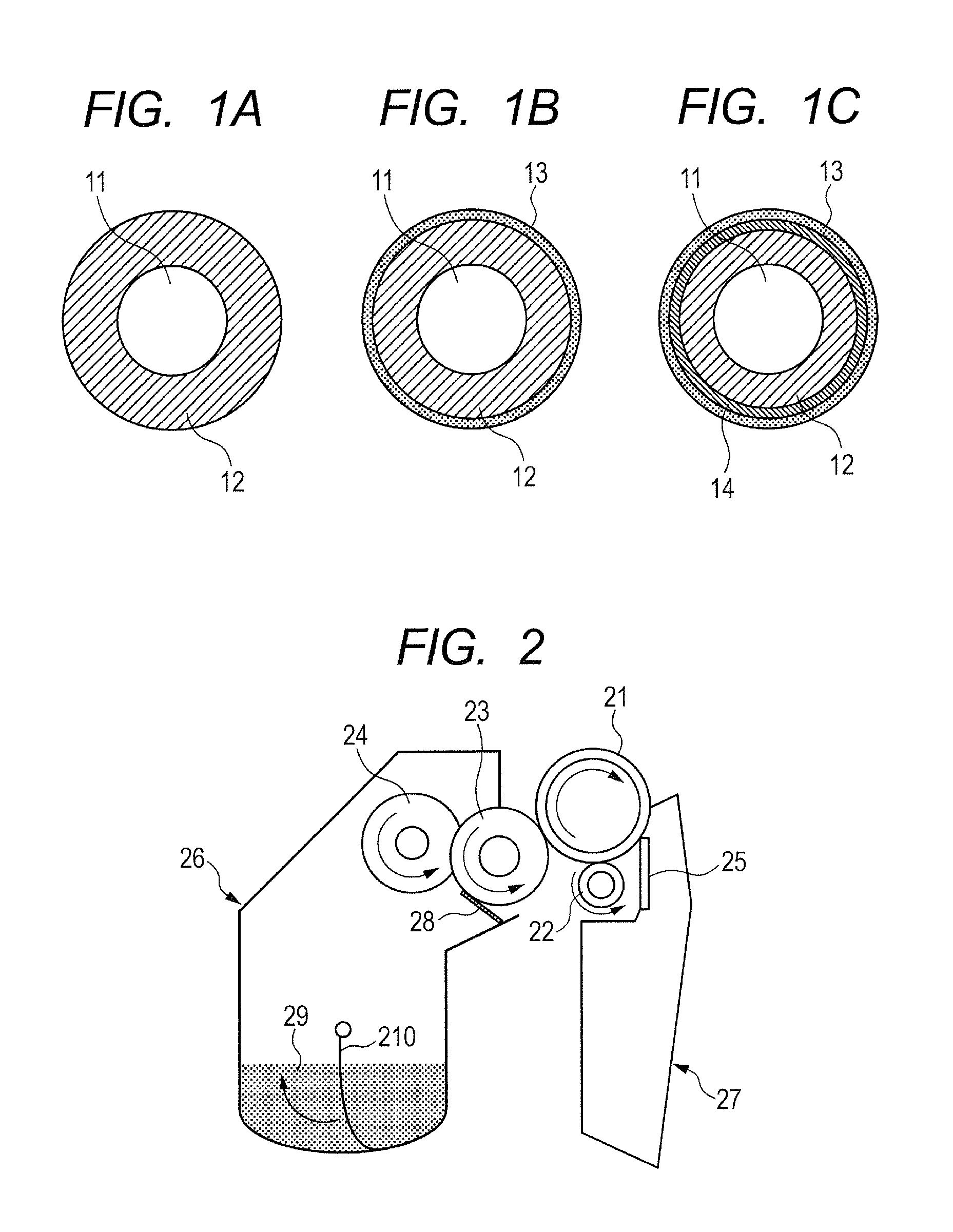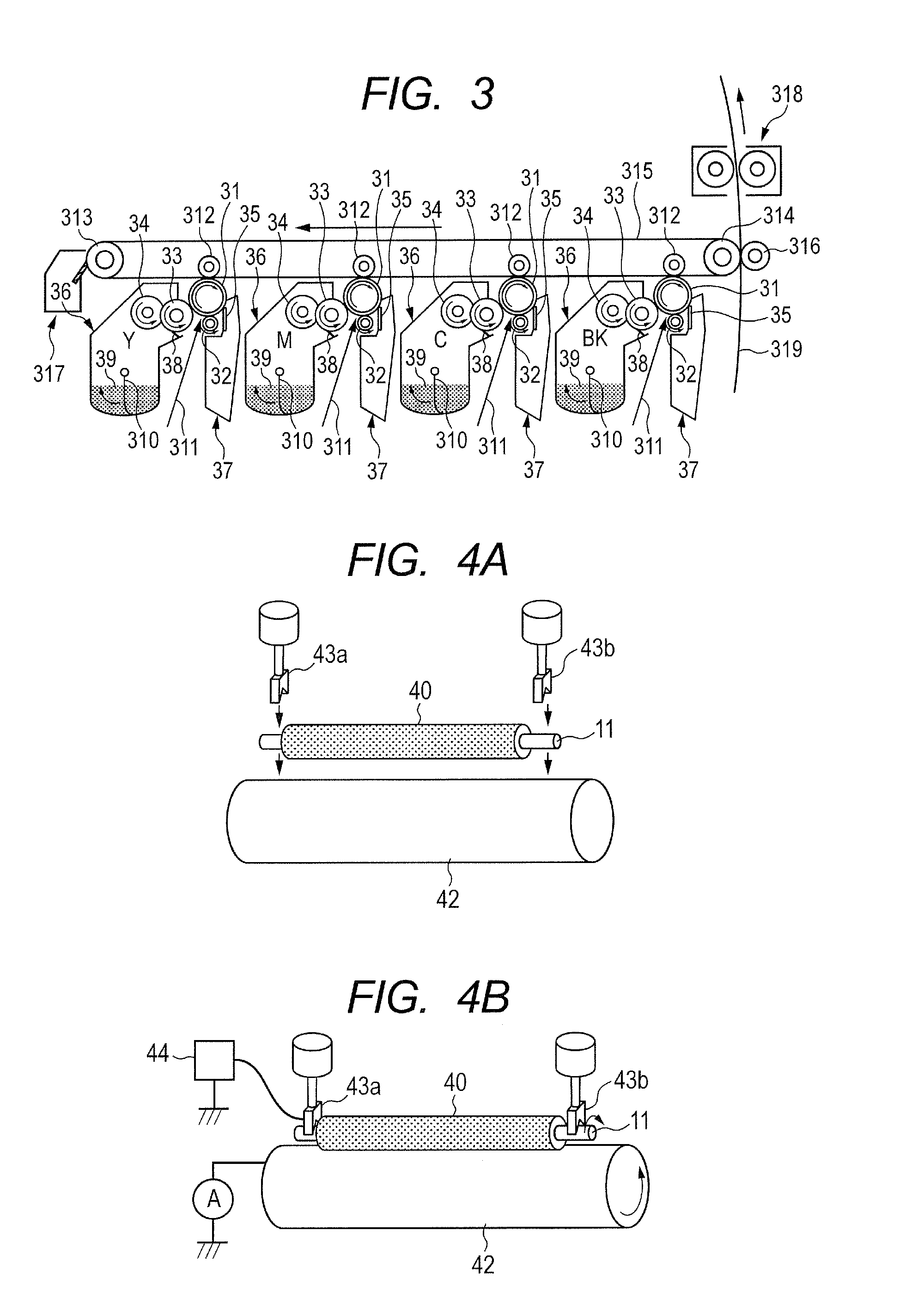Electro-conductive member, process cartridge, and electrophotographic apparatus
a technology of electrophotography and electro-conductive components, applied in the direction of electrographic processes, instruments, corona discharge, etc., can solve the problems of pinhole leakage, portion that cannot be charged, and excessive resistance reduction of electro-conductive components in the h/h environment, so as to reduce resistance value under the l/l environment, the effect of optimizing the resistance valu
- Summary
- Abstract
- Description
- Claims
- Application Information
AI Technical Summary
Benefits of technology
Problems solved by technology
Method used
Image
Examples
production example 1
Production of Elastic Roller
[0131]An elastic roller was produced according to the following procedure.
[0132]
[0133]An “A-kneading rubber composition 1” was obtained by mixing respective materials whose kinds and amounts were shown in Table 1 below with a pressure kneader. Further, the respective materials whose kinds and amounts were shown in Table 2 below were mixed into 177 parts by mass of the A-kneading rubber composition with an open roll. Thus, an “unvulcanized rubber composition 1” was prepared.
[0134]
TABLE 1Blending amountMaterial(part(s) by mass)Raw rubberNBR (trade name: Nipol100DN219, manufactured byZEON CORPORATION)Electro-Carbon black40conductive agent(trade name: TOKABLACK#7360SB, manufactured byTOKAI CARBON CO., LTD.)FillerCalcium carbonate20(trade name: Nanox #30,manufactured by MARUOCALCIUM CO., LTD.VulcanizationZinc oxide5accelerating aidProcessing aidStearic acid1
[0135]
TABLE 2Blending amountMaterial(part(s) by mass)CrosslinkingSulfur1.2agentVulcanizationTetrabenzylt...
production example 2
Preparation of Coating Liquid
[0139]A coating liquid containing a binder resin for forming the electro-conductive layer according to the present invention was prepared according to the following procedure. It should be noted that the binder resin of the present invention is produced from: an ionic electro-conductive agent (I) having a reactive functional group as a raw material; a carrier molecule (II) which is a counter ion of the ionic electro-conductive agent; and a binder resin (III) as a raw material.
[0140]
[0141]8.56 Grams (56.5 mmol) of glycidyltrimethylammonium chloride as an ionic electro-conductive agent (I) having a reactive functional group were dissolved in 50 ml of purified water and then the solution was stirred for 1 hour. Next, 16.22 g (56.5 mmol) of lithium cyclohexafluoropropane-1,3-bis(sulfonyl)imide as a carrier molecule (II) which was a counter ion were dissolved in 50 ml of purified water and then the solution was stirred for 1 hour. Next, those two kinds of aqu...
example 1
1. Production of Electro-Conductive Roller 1
[0158]The elastic roller 1 obtained in Production Example 1 was coated with the coating liquid 1 obtained in Production Example 2 by a dipping method involving immersing the roller in the liquid with its longitudinal direction defined as a vertical direction. An immersion time was set to 9 seconds, an initial lifting speed was set to 20 mm / s, a final lifting speed was set to 2 mm / s, and a speed was linearly changed with time between the initial and final speeds. The resultant coated product was air-dried at 23° C. for 30 minutes. Next, the product was dried with a hot air-circulating dryer set to 90° C. for 1 hour. Further, the product was dried with a hot air-circulating dryer set to 160° C. for 3 hours. Thus, an electro-conductive layer was formed on the outer peripheral surface of the elastic roller 1. As a result, a “electro-conductive roller 1” was produced.
2. Characteristic Evaluation
[0159]Next, the electro-conductive roller 1 was su...
PUM
| Property | Measurement | Unit |
|---|---|---|
| temperature | aaaaa | aaaaa |
| temperature | aaaaa | aaaaa |
| resistance | aaaaa | aaaaa |
Abstract
Description
Claims
Application Information
 Login to View More
Login to View More - R&D
- Intellectual Property
- Life Sciences
- Materials
- Tech Scout
- Unparalleled Data Quality
- Higher Quality Content
- 60% Fewer Hallucinations
Browse by: Latest US Patents, China's latest patents, Technical Efficacy Thesaurus, Application Domain, Technology Topic, Popular Technical Reports.
© 2025 PatSnap. All rights reserved.Legal|Privacy policy|Modern Slavery Act Transparency Statement|Sitemap|About US| Contact US: help@patsnap.com



